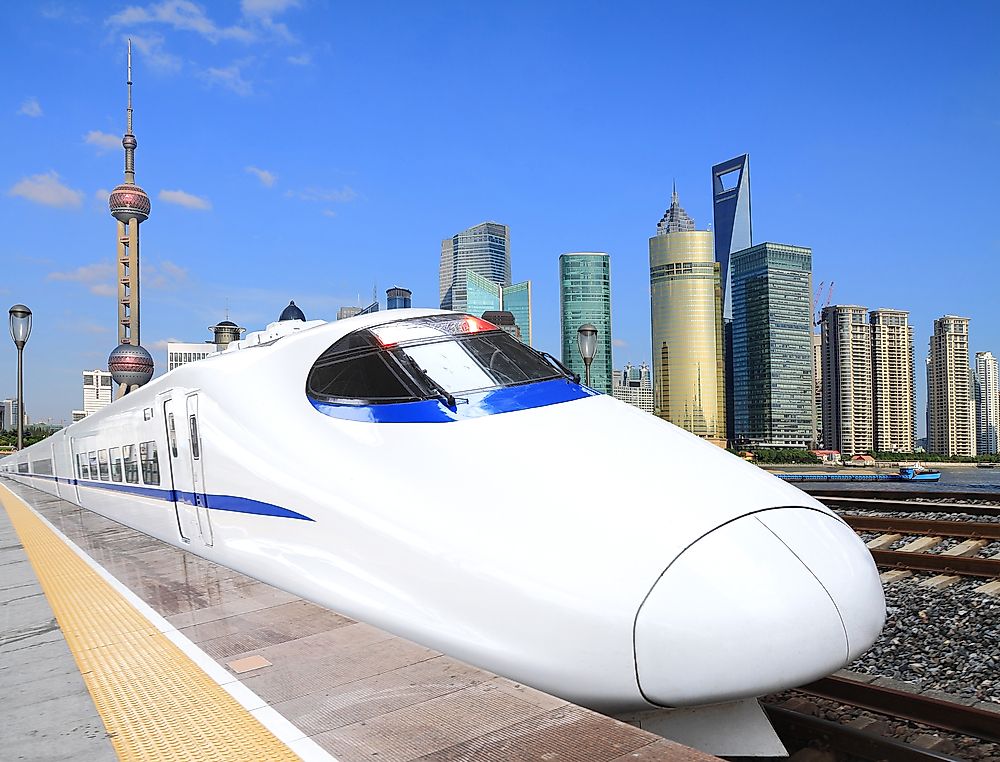Countries With The Largest Rail Networks

In spite of progressive air transport technologies and new ones like the magnet balanced tube tunnels recently presented by Elon Musk's company, the rail transport remains the most efficient and relatively cheap way to transport passengers and cargo over long distances. The cost-effectiveness becomes even more evident when cargo volume increases and requires to be carried over the longer distance.
The World's Longest Railways
The United States
The railway roads of the USA are considered to be the largest and most extensive network in the world, totaling 228,000 km of railroad paths. However, railway lines for freight transportation account for about 80% of the network, which leaves passenger routes at 35,000 km, which is less than in many countries down the list. While Amtrak is mostly for passengers’ needs, the US freight rail network, mostly operated by private companies, is shared between giants such as the Union Pacific Railroad and BNSF Railway.
Russia
Russia comes in second places in terms of the length of railroad paths. In Russia, 95% of railways are operated by the state monopoly - The Russian Railways. Russian Railways embraces the huge country with a railroad network of more than 85,200 km. The Russian railway network comprises ten major destinations most of which take the source from Moscow, the capital. The western and northwestern routes are interconnected with railways of Finland, France, Germany, and Poland. On the east and southeast, the iron branches stretch as far as to national railway systems of China, Mongolia, and North Korea. The Trans-Siberian Railway, connecting Moscow and Vladivostok, is the longest and one of the busiest railway lines in the world as it covers a length of 9,280 km.
China
China surely catches up with its neighbors with an extensive network of railways controlled by the state China Railway Corporation. The outstanding capacity to provide service for about 2 billion passengers and more than 3 billion tons of cargo per year makes the Chinese railroads the most intensively loaded in the whole of Asia. The railway network consists of more than 55,000 km of conventional railway lines, about 10,000 km of high-speed routes and the railroad segment of 2,298km between Beijing and Guangzhou which is the longest high-speed rail line in the world.
India
About eight billion passengers use the Indian Railways every year, the number no other railroad company in the world ever dares to imagine. The Indian railway network is state-owned, with all management and maintenance functions done by the governmental agency supervising the working route of more than 65,000 km.
The Indian national rail network is currently undergoing upgrades aiming by 2017 to add about 5,000 km of new lines and increase the transportation capacity up to 22,000 trains a day. Currently, the country's rail system is divided into 17 zones with the daily circulation of 12,000 passenger trains and 7,000 freight carriers. India is just entering an era of high-speed transits and has invested more than $10 bn in the construction of high-speed corridors. The first segment of this new project, a 530 km passage between Mumbai and Ahmedabad, is expected to come into operation by 2018.
Canada
Unlike India, Canada deals with much greater distances between cities. To address this challenge there are few companies providing services from Atlantic coast to Pacific. The Canadian National Railway and Canadian Pacific Railway, along with Algoma, Ontario Northland passenger, and Via Rail sum up 52,131 km of Canadian railroad system. Three Canadian cities - Montreal, Toronto, and Vancouver have an extensive and highly efficient system of suburban trains. In some areas of the country, the railway companies offer refined tourist train routes to get acquainted with picturesque remote corners of the country.
Honorable Mentions
Germany
The German Deutsche Bahn is the most famous railroad brand in Europe with an extensive network of railways across Germany and abroad. The share of DB accounts for 90% of passenger transportation over long distances within Germany as well as from Germany to Austria, Switzerland, Poland and France. In addition to Deutsche Bahn network, another 130 private companies perform railroad operational activity, providing most of the regional passenger transits and freight transportation. The S-Bahn serves mostly in suburban areas of large cities. The Hamburg-Cologne Express (HKX) is the next to the DB for long-haul passenger transport. By 2017, Germany will have more than 3,000 km of high-speed roads connecting major German cities with other European capitals and international airports.
France
The neighboring French railway system has got two specific features. Paris and its suburbs are the most densely populated areas and accounting for 47% of county's passenger traffic performed at the regional level. In view of popularity as a cultural center of Europe - such cities as Paris, Strasbourg and Leon attracted a huge passenger flow. This affects the increase of railway infrastructure in the vicinity of large cities and the development of high-speed highways connecting these centers with other European destinations.
Another unique specificity of the French network is the tunnel between France and the Great Britain which concentrates the enormous flow of freights from all across the Europe and encourages private and national railroad companies to build and develop a truly gigantic network to access the main railroad connecting continental Europe with Great Britain.
Countries With The Largest Rail Network In The World
| Rank | Country | 2014 (Rail Lines, total route) in km |
|---|---|---|
| 1 | United States | 228,218 |
| 2 | Russian Federation | 85,266 |
| 3 | China | 66,989 |
| 4 | India | 65,808 |
| 5 | Canada | 52,131 |
| 6 | Germany | 33,426 |
| 7 | France | 30,013 |
| 8 | Brazil | 29,817 |
| 9 | Mexico | 26,704 |
| 10 | Argentina | 25,023 |











